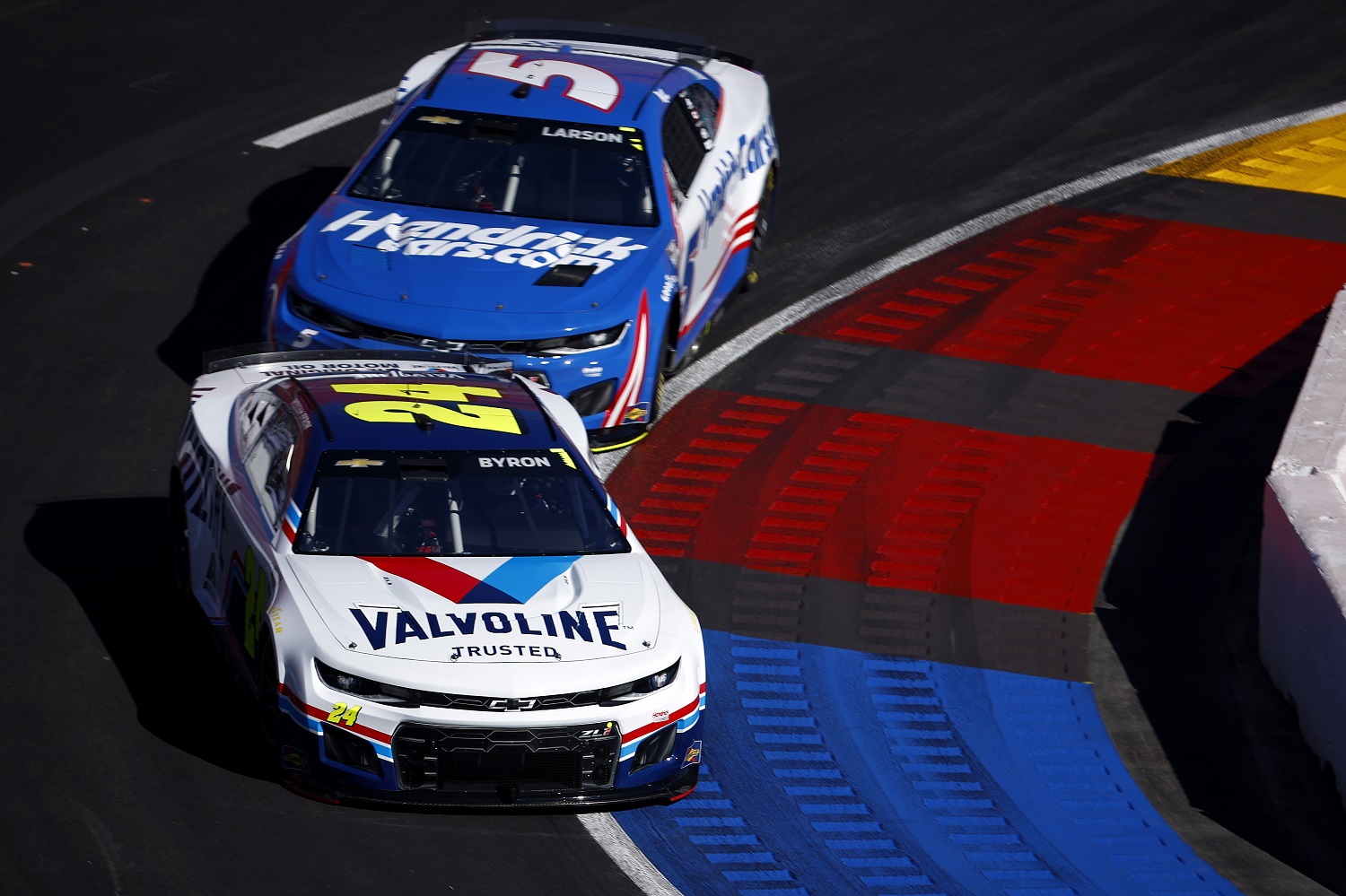NASCAR
NASCAR’s Busch Light Clash Won’t Feel Like Real Racing Unless You’re a Fan of Traffic Moving Slower Than Your Nearest Expressway

Lights! Camera! Inaction! Welcome to the Busch Light Clash, NASCAR’s screen test 20 minutes from where the owner of Fox Sports films its other made-for-TV dramas. The executives running the sport have gone all-in on glitter to reel in a new audience they hope will follow them to the Daytona 500.
More likely, they’ll leave their hardcore racing fans miffed. Maybe that’s because the latest iteration of the Busch Light Clash resembles racing the same way Porky’s reminded Academy Award voters of Citizen Kane.
If speed kills, then the lack of it kills the excitement
NASCAR fans need to remember that the Busch Light Clash at the Los Angeles Coliseum on Sunday is an exhibition. It will hold more entertainment value than split-squad teams of the Cincinnati Reds and Atlanta Braves playing a week into spring training. But it pales in comparison even to the twin duels three days ahead of the Daytona 500, the real start to the season.
Thus, it’s permissible to skip the Clash in favor of flipping over to NBC to see if the Jamaicans have entered another bobsled in the Olympics. Oh by the way, bobsleds max out at about 90 mph, so maybe that is the better viewing option.
Maximum speeds on a clear Coliseum track might hit 75 mph, but it will take maybe eight times around the oval before the leaders in Sunday’s race start coming up on lapped traffic, which will slow things down. Just look at Martinsville and Bristol, tracks that are twice as big as the Coliseum’s.
The average speed at Martinsville was 67 mph last April for a field in which 29 cars were still running at the end. Even with 35 cars still running, the average for the playoff race there checked in at just under 71 mph. Meanwhile. Bristol’s playoff race averaged 87 mph, still far below the 98 mph on Richmond’s three-quarter-mile track.
Those tracks have longer straightaways than the Coliseum oval, built around a football field. By the time the new Next Gen cars come out of the turn, they will have approximately three seconds at what passes for maximum throttle before braking, lest they plow into the SAFER Barrier behind the end zones.
So, if your favorite online betting app offers action on Sunday’s average speed and sets the over/under at 65 mph, definitely take the under.
Don’t confuse style for substance at NASCAR’s Busch Light Clash
Everything about the Busch Light Clash suggests NASCAR is looking to debut with some flashiness, starting with the venue itself. The Los Angeles Coliseum has hosted Super Bowls, World Series games, and the Olympics, a history likely to be noted repeatedly during Fox Sports coverage.
Also, NASCAR has gone all out in announcing grand marshals for Sunday’s race: Eric Dickerson, Jim Abbott, Greg Townsend, Misty May-Treanor, Jeff Gordon, Matt Leinart, Dave Roberts, and Reggie Bush.
Obviously, Gordon is one of the sport’s all-time greats, so NASCAR is playing off his Vallejo, California, roots and multiple Cup series championships. Nevertheless, he’s just one of eight grand marshals, which makes each of them a little less grand.
So, NASCAR is borrowing someone else’s forum and other sports’ stars to lay down some credibility in the town. How will going for that sort of flashiness play with a fan base that thought Tim Richmond was too “Hollywood” for stock car racing? Unless 23 drivers put on a major show, the answer is likely to be “not well.”
The Busch Light Clash can leave newcomers with the wrong impression
NASCAR has noted the large percentage of fans attending Sunday’s race who’ve never witnessed a race in person. In addition, promotion for the first Clash away from Daytona International Speedway has highlighted the tight confines of the quarter-mile track and the likelihood that the ratio of rubbin’ to racin’ will be high.
Whether the sparkling new Next Gen cars get banged or not will be irrelevant. The reaction of spectators watching for the first time in person or on television will matter in two weeks when NASCAR wants them to watch the Daytona 500.
The sport potentially is taking the uninitiated from viewing bumper cars at 60 mph on a quarter-mile track to long-line drafting on the superspeedway at three times (and change) that speed.
The newbies won’t know which version to believe. The longtime fans will know. If NASCAR is lucky, they’ll regard this weekend as a necessary evil and keep their focus on the real racing.
All stats courtesy of Racing Reference.
RELATED: Has the Busch Light Clash Winner Ever Won the Daytona 500 in the Same Year?











